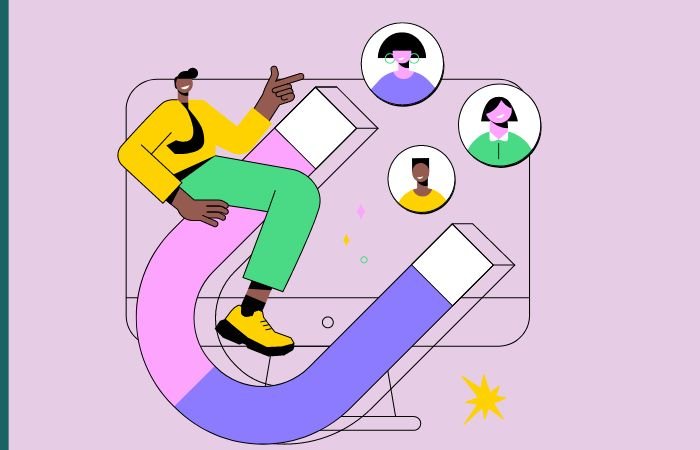The online purchase funnel explained
Today, the customer purchase journey is hugely complex, especially when you take into account all the touch-points that inform a buying decision - both online and offline, resulting in the buyers purchase funnel. How can a business navigate this complex journey? Guest writer Andrew Plant, Journey’s Digital Marketing Manager, gives you a crash course in the online purchasing funnel.
Even when it comes to B2B selling, people still tend to buy products or services in two main ways - emotive purchases and calculated purchases.
Emotive purchases
Emotive purchases are driven by brand loyalty or affinity, and are often impulsive (but that doesn’t make them frivolous). Consumers that have an immediate ‘love match’ with a brand, find it easier to buy instantly because the consideration stage is much shorter. These things are often luxury goods like designer clothes, high value tech products, or high end cars.
Calculated purchases
With calculated purchases, the drivers tend to be around price, ease of purchase, locality or product specification. When these drivers are in play, there is little brand loyalty. Consumers are generally looking for the cheapest product that matches their set of criteria. Calculated purchases tend to be commoditised items such as groceries, low value electrical goods, or city hotels (where competition is high).
Depending on the industry, some purchases can take several days of decision making while others will happen instantly. Knowing how it works for your business is key to understanding how your own funnel is unique and how you can optimise each stage to convert for your sales.
At Journey, we’ve broken down the buying funnel into six stages. This is based loosely on Google Evangelist, Avinash Kaushik’s See Think Do model.
Awareness: This is when potential consumers are first made aware of your brand.
Research: This is when people know they want a product. They know they want/need it in a broad sense and will start researching to understand what their options are.
Opinion: At this stage, potential consumers have a better idea of what products might suit their needs. They begin refine their choices and seek opinions by reading reviews, talking to friends or reading expert advice.
Consideration: A consumer is now weighing different options against each other. They may read product reviews, try samples, compare brand USPs against their needs. They are now finalising their choices.
Preference: This is the final stage before browsing becomes conversion. After doing all the required research and testing, the consumer decides which brand or product is most suitable for them.
Purchase: The consumer takes the plunge and is ready to buy.
So, how can your business use the purchasing funnel to improve sales and conversions?
Here are a few pointers you can try adopting in your marketing strategy to raise brand awareness and help customers engage at each stage. Even if it’s just the start of an initial relationship, you never know when customers will have a need for your product or service.
Do your keyword research. You want to make the browsers aware of your brand as early on as possible. Utilise broad search terms to appear as a viable option at the initial stage so they start to become familiar with your brand.
Connect with social influencers. Social media has become a huge marketing tool. It’s a hive of activity that shows people discussing their lives and things they want to purchase. This could be tagging a friend in a photo of a dress they might like, to commenting on a hotel deal and asking a friend’s opinion. Use Facebook Ads to increase your reach and include the people who influence your target market, such as their friends and family.
Know the experts. Expert opinions can be a powerful tool with calculated purchases. Browsers are looking for opinions they can trust as well as consumers. Research the experts in your industry and ask them to do product reviews or service testimonials. If they flag things that aren’t working for them - take this on board and try to overcome this.
Have specific content. Conduct more focused keyword research. You know your USPs - make sure your content champions them so your brand is a strong choice throughout the purchasing funnel.
Run targeted campaigns that reach people in the consideration stage. Hopefully at this stage browsers will be aware of your brand. It’s at the consideration stage that you need to trump the competition and hook them in. This could be with an exclusive discount through email marketing or display adverts which remarket to people that have viewed your website previously. Find out where your customers hang out online and use display ads to appear on relevant websites to remind them that you exist.
Cart abandonment techniques. Even if your business is in the professional services, you can still adopt techniques from ecommerce websites. There’s a lot to be learnt from retail brands online and it’s worth experimenting with what could work for your business such as pop up messages which trigger before a user closes down the browser window or has a level of inactivity on the page.
Understanding the purchasing funnel and ways to engage with your (potential) customers at each stage can help you increase sales and understand when consumers are dropping out of the funnel. When you know this, you can understand why and make tweaks to rectify the problem using some of the techniques above.
Ultimately, by increasing brand awareness through PPC tactics such as display ads, Google Ads, remarketing, and social media advertising, you shift the curve from calculated purchase towards an emotive purchase driven less by price and more with perceived value. The more you can match your product, content and brand to your target consumer, the shorter the funnel gets and the more you increase their loyalty to you.









